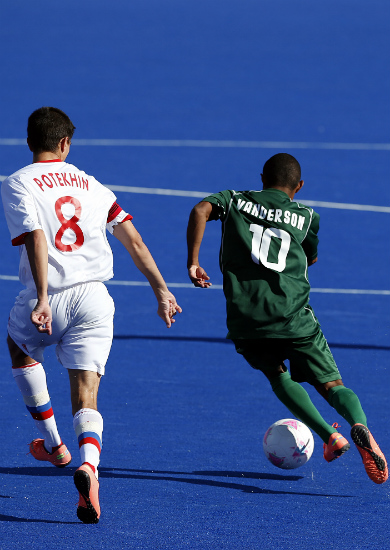7-a-side football
 History
History
Seven-a-side football has been part of the Paralympic programme since the 1984 edition of the Games. The sport was invented in Edinburgh (Scotland) in the third edition of the International Cerebral Palsy Games in 1978. The first world championship was held in 1982 in Denmark. In the history of the Paralympic Games, Brazil has got two medals to its name: one silver and a bronze.
During the match, at least one class 5 or 6 player has to be on the field and at the most two class 8 athletes. Athletes with higher disability grades tend to play as goalkeepers.
There are other differences in relation to conventional football. The match has two 30 minutes halves. In addition, there is no off-side rule and the throw in may be taken using only one hand.
Classification
It is a men's only sport and played by athletes with cerebral palsy. Athletes are classified from class 5 to 8 according to their disability grade. The higher the number the more functional ability the athlete has.
Brazilian 7-a-side Football Confederation (CBF7)
Site: www.cbf7.com.br
E-mail: cbf7@terra.com.br
International Federation of Football 7 Society (FIFO7S): www.fifo7s.com.br


